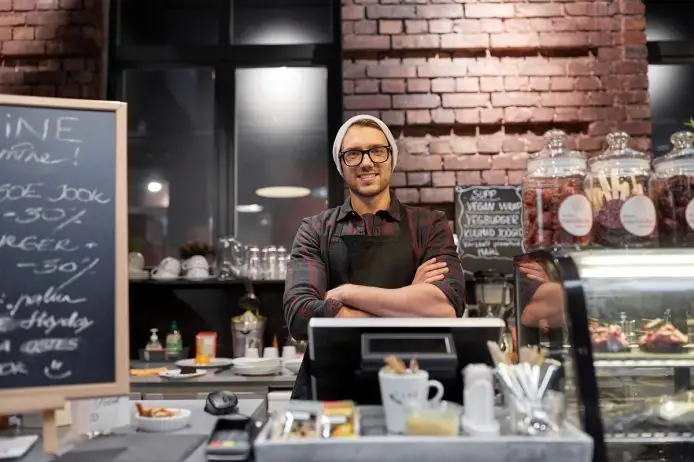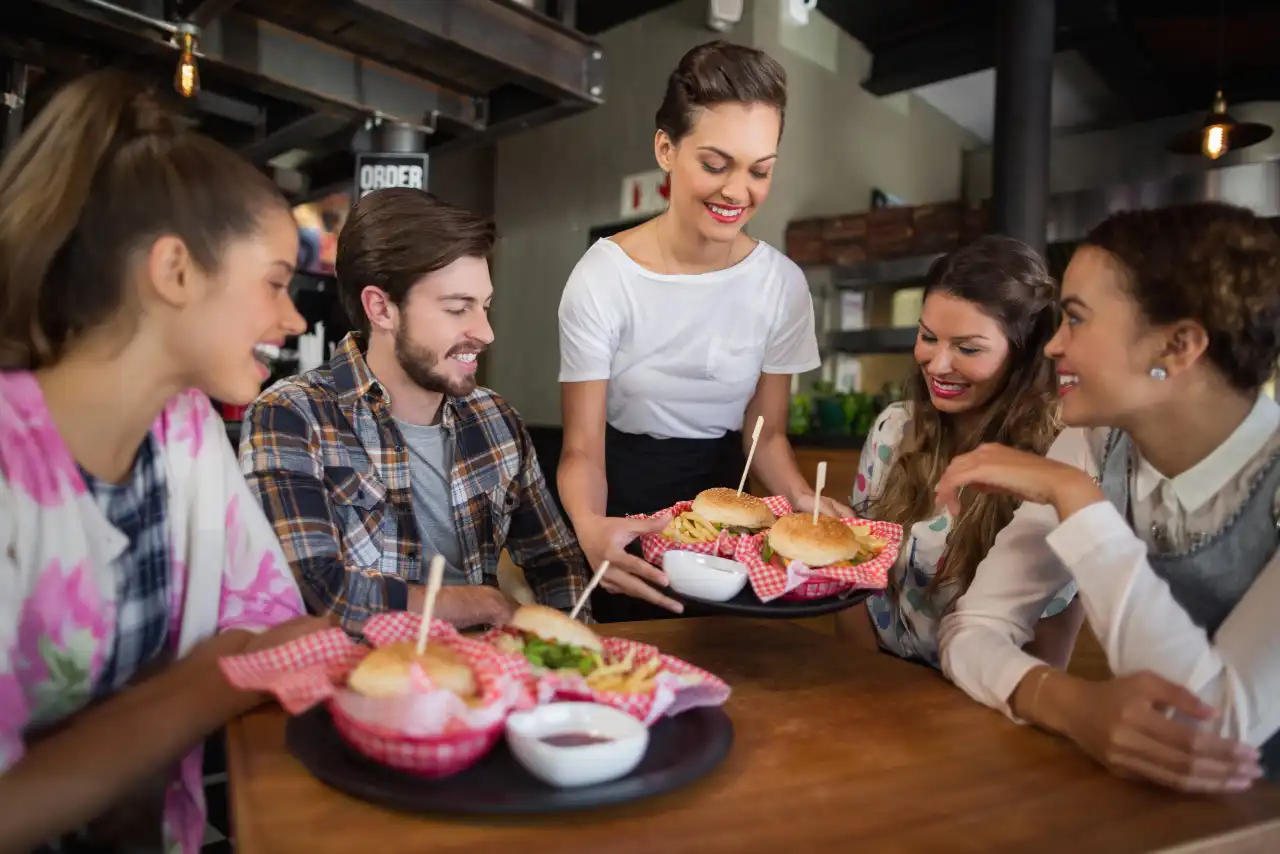The restaurant industry has undergone a significant transformation in the past few years, with increased competition and evolving guest preferences.
Consequently, restaurateurs have been seeking innovative ways to attract and retain guests. Restaurant marketing automation has emerged as a powerful tool to enhance guest engagement, improve operational efficiency, and increase revenue.
Here we will discuss the various aspects of marketing automation for restaurants, highlighting its benefits and showcasing best practices to implement it effectively to save you time and money.

What is Restaurant Marketing Automation
Marketing automation refers to the use of software and technology to automate repetitive marketing tasks and processes.
For restaurants, this includes things like customer relationship management, restaurant email marketing, reputation management, loyalty program administration, and online reservation and ordering systems.
By leveraging marketing automation, restaurant owners can enhance guest engagement, improve operational efficiency, and drive revenue growth – all while reducing manual labor and human error.
This powerful tool is essential for restaurants looking to elevate their marketing efforts and create memorable experiences for their guests.
Benefits of Restaurant Marketing Automation
Embracing marketing automation in the restaurant industry provides a wealth of benefits that empower businesses to thrive in a competitive landscape.
By utilizing marketing automation tools, restaurants can deliver personalized experiences, streamline marketing tasks, and identify trends for better decision-making.
As a result, restaurant owners can optimize their resources and focus on providing exceptional dining experiences to both new and loyal guests while fostering long-lasting relationships.
Here are some of the powerful benefits of marketing automation:
1. Enhanced Guest Engagement
Marketing automation allows restaurants to stay connected with their guests at every stage of the customer journey. Through targeted email campaigns, personalized offers, and tailored loyalty programs, restaurants can engage their audience better and foster long-lasting relationships. This not only helps to increase repeat business but also enhances overall guest satisfaction.
2. Improved Operational Efficiency
Automation helps streamline various marketing tasks, leading to improved efficiency and time savings. By automating tasks like customer feedback collection, responding to reviews, email campaigns, and potential customer churn, restaurant staff can focus on running their restaurant operations and providing exceptional service to their guests.
3. Increased Revenue
Automated marketing campaigns and targeted promotions can drive more traffic to a restaurant, both online and offline. This, in turn, leads to increased revenue as new customers discover the restaurant and loyal customers return more frequently.
4. Data-Driven Decision Making
Marketing automation tools collect valuable guest data, such as preferences, past orders, and visit frequency. This data can be analyzed to identify patterns and trends, enabling restaurant owners to make data-driven decisions on menu items, promotions, and guest engagement strategies.
5. Cost Savings
By reducing the need for manual labor and minimizing human error, marketing automation can lead to significant cost savings for restaurants. This allows for more effective budget allocation, with valuable funds being directed toward other areas of the business.
The benefits of marketing automation for restaurants are both diverse and impactful. By streamlining marketing tasks, enhancing guest engagement, improving restaurant reputation, enabling data-driven decisions, and cutting costs, marketing automation provides a competitive edge in a demanding industry.
By integrating these powerful tools, restaurant owners can foster long-lasting relationships with their patrons while optimizing operations, ultimately resulting in a more successful and memorable dining experience.

Implementing Marketing Automation in Restaurants
The implementation of marketing automation in restaurants has become an indispensable strategy for success in an increasingly competitive industry.
By leveraging software and technology like what Bloom Intelligence delivers, restaurant owners can effectively automate repetitive marketing tasks while optimizing guest engagement, and improving overall operations.
This section explores the process of implementing marketing automation in restaurants, highlighting key aspects. As restaurants venture into the world of marketing automation, a strategic approach is crucial to unlock its full potential and elevate the dining experience for every guest.
1. Choose the Right Tools
Selecting the appropriate marketing automation software is crucial for success. Look for a platform that offers features tailored to the restaurant industry. Remember that customer service is important when choosing a restaurant marketing platform.
2. Grow a Customer Database
A comprehensive customer database is the foundation of effective marketing automation. Encourage visitors to sign up for your mailing list on your website, or log into your guest WiFi. Also, make sure to integrate with your POS and online ordering system. This will provide you with valuable data, such as email addresses, phone numbers, and visit/ordering history, which can be used for targeted marketing campaigns.
3. Segment Your Audience
Divide your customers into segments based on factors such as visit times and frequency, demographics, and geographic data. This enables you to create personalized marketing messages and offers, which are more likely to resonate with your audience.
4. Implement Email Marketing Campaigns
Restaurant email marketing is a powerful way to engage with customers, promote special offers, and share news about your restaurant. Automate the process by setting up triggered email campaigns, such as birthday promotions, anniversary discounts, personalized offers, and surveys.
5. Set Up a Loyalty Program
Implement an automated loyalty program to reward repeat customers and encourage new visitors to become regulars. Utilize a platform that integrates with your marketing automation software to track customer visits and reward redemption. Personalize rewards based on individual preferences, and use targeted marketing to promote the program and drive customer engagement.
6. Optimize Online Reservations and Online Ordering
Implement online reservation and ordering systems that integrate with your marketing automation platform. This not only streamlines the process for guests but also provides valuable data for your marketing efforts. Utilize this data to send targeted promotions, such as discounts on off-peak hours or reminders for upcoming special events.
7. Monitor and Analyze the Results
Track the performance of your marketing automation campaigns using built-in analytics and reporting tools. Monitor key performance indicators (KPIs) such as open rates, click-through rates, conversion rates, and customer lifetime value. Use this data to refine your campaigns and make data-driven decisions for future marketing initiatives.
8. Continuously Test, Improve, and Adapt
The key to successful marketing automation is continuous improvement. Regularly assess the effectiveness of your campaigns and make adjustments as needed. Stay up-to-date with industry trends and customer preferences, and be prepared to adapt your marketing strategies to meet evolving needs.
The successful implementation of marketing automation in restaurants is a game-changer, offering a competitive edge in a demanding industry. By strategically following these steps, restaurant owners can harness the power of marketing automation to drive guest engagement and improve operations.
As technology and guest preferences continue to evolve, it is imperative for restaurants to stay ahead of the curve by embracing marketing automation, ultimately setting the stage for exceptional dining experiences and long-term business success.

Tying It All Together
Marketing automation is a powerful tool for restaurants, offering a multitude of benefits, including enhanced guest engagement, improved operational efficiency, increased revenue, and cost savings.
By implementing marketing automation best practices, restaurant owners can better understand who their guests are, develop more effective marketing strategies, and ultimately create a better guest experience.
Embracing marketing automation is a necessary step for restaurants that want to stay competitive and relevant in today’s fast-paced digital world.
By choosing the right tools, segmenting your audience, and continuously refining your strategies, you can unlock the full potential of marketing automation and set your restaurant on a path to success.
Discover Bloom Intelligence
Bloom Intelligence is an AI-powered restaurant marketing platform that incorporates a powerful marketing automation system. Discover how to easily find and keep new guests, improve your restaurant’s reputation, optimize the guest experience, and increase customer lifetime values – all while saving time and lowering marketing costs.
Call us or schedule a free demo online and Bloom will show you how our restaurant marketing platform can help you save time and increase revenue by automatically building first-party customer databases, unlocking important guest insights to trigger automated marketing at the right time and place, discover true guest sentiment, save at-risk guests, increase your current guests’ frequency, and find new guests.
Click Here to Schedule a Free Online Demo or call Click To Call 727-877-8181 to see how we can help you save time and drive tangible results for your restaurants





.svg)